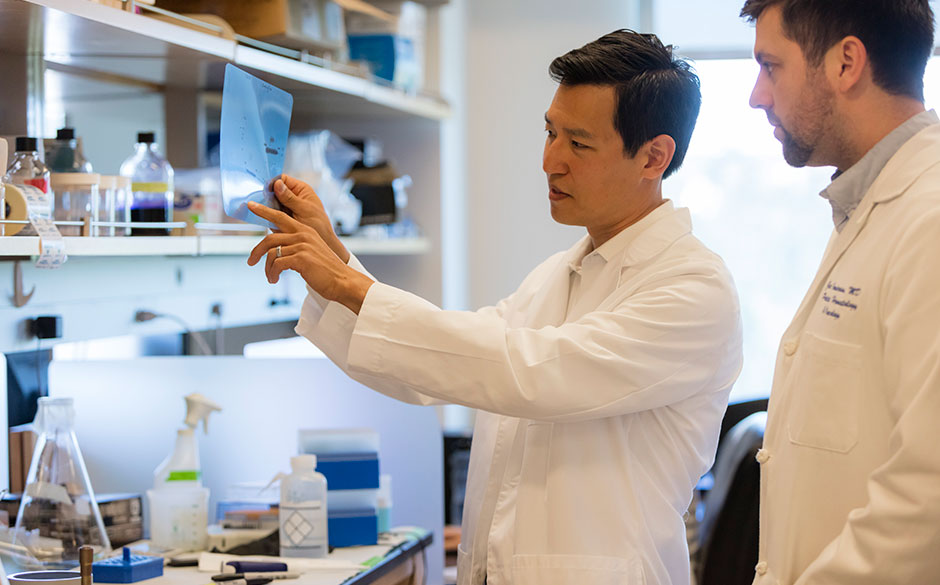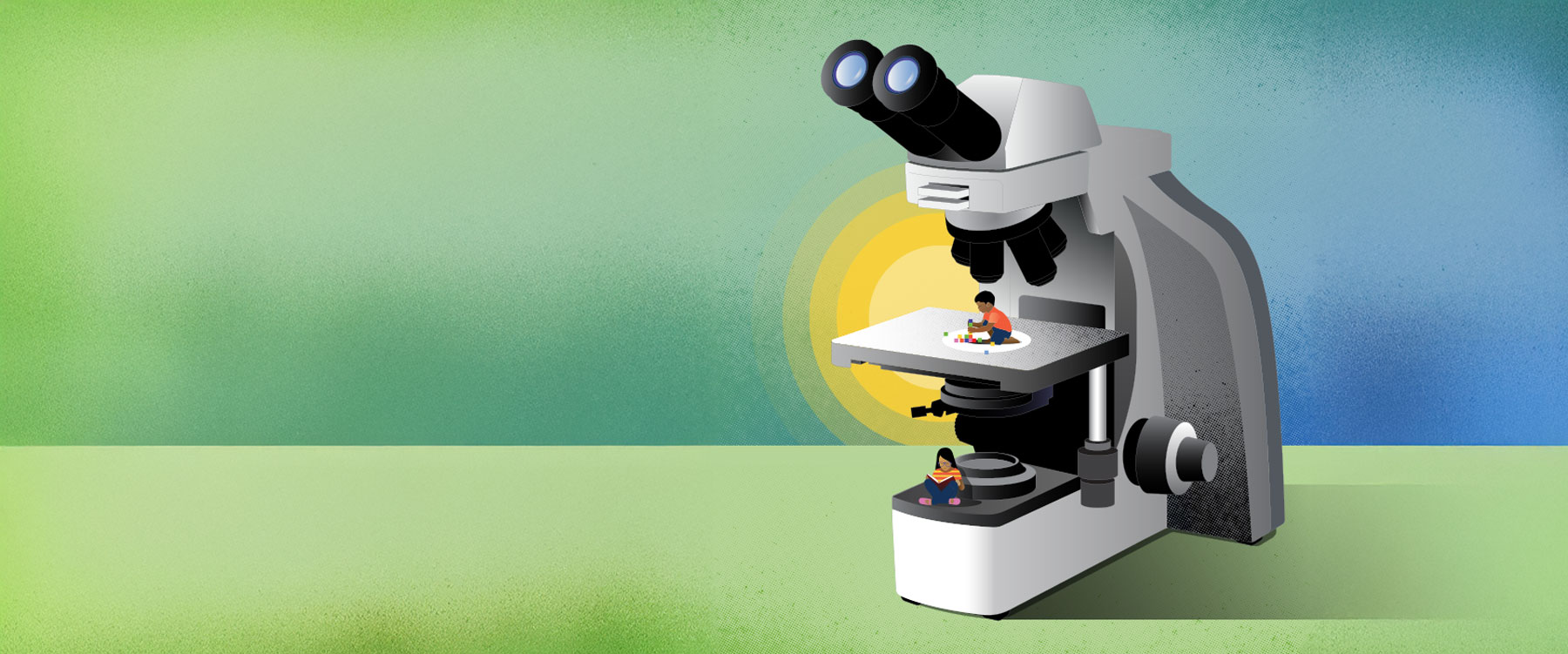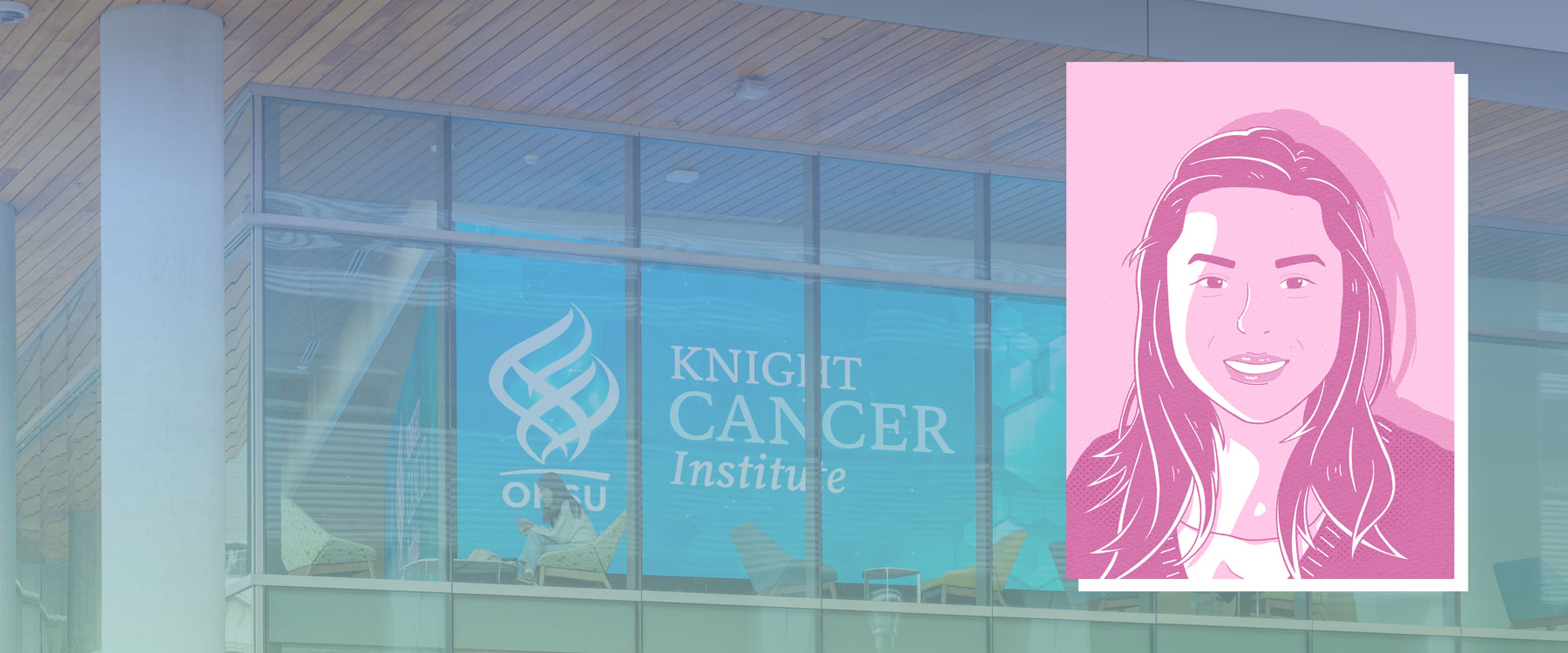OHSU Doernbecher Children’s Hospital has recruited Yoon-Jae Cho, M.D., thanks to a new endowed professorship from Wayne and Sandy Ericksen.
Dr. Cho is the chief of the Division of Pediatric Neurology, Ericksen Family Endowed Professor for Research, and scientific director of the Pediatric Brain Tumor Program. He is also a graduate of OHSU School of Medicine. Prior to returning to OHSU, Dr. Cho was a faculty member at Harvard Medical School, where he cared for patients at Boston’s Children’s Hospital, the Dana-Farber Cancer Institute and most recently the Lucile Packard Children’s Hospital at Stanford University.
“My father taught me a lot of things, and perhaps his biggest piece of advice was to find something you’re really passionate about — something that wakes you up in the morning.”
Dr. Cho’s work is focused on two of the most lethal pediatric brain tumors: medulloblastoma and pediatric high-grade glioma. His lab discovered that medulloblastomas, which were traditionally considered one disease, are actually four distinct diseases. His goal is to understand the molecular and cellular components of brain tumors, identify their vulnerabilities and develop more precise treatment strategies for patients.
We asked Dr. Cho to tell us about his work in pediatric neurology.
Can you share a little bit about your background?
I grew up in southwestern Pennsylvania. My father is a general practitioner and set up his practice in a small coal mining town outside of Pittsburgh in July 1976. He still practices medicine today.
My father taught me a lot of things, and perhaps his biggest piece of advice was to find something you’re really passionate about — something that wakes you up in the morning. When folks ask me why I’m interested in science, I often look back to my childhood when I wandered the hills and woods of western Pennsylvania, simply exploring things. I think it’s that joy of discovery that has stayed with me. Science and the joy of discovery are what wake me up every morning.
Have there been other major influences in your career?
When I was at OHSU School of Medicine in the ‘90s, there was a new young faculty member who’d recently moved here from Boston, and he was studying a protein called abelson (ABL) kinase, which was similar to a protein I was studying in the Department of Molecular and Medical Genetics. That “new” guy just happenend to be Brian Druker. It was quite fascinating being a student at OHSU during that time, watching Brian develop Gleevec®, the first targeted cancer therapy. It really created a paradigm that has changed the landscape of medical research, ushering in the era of “precision medicine.” And certainly, that paradigm is something that I carried with me throughout all stages of my own research.
Tell us about medulloblastoma.
It’s the most common malignant brain tumor in kids. It occurs exclusively in the back of the brain, and it’s a devastating disease. It’s a highly aggressive tumor, and we currently treat it with a combination of neurosurgery, several weeks of radiation therapy and months of very hard chemotherapy.
How has the research changed over the last few years?
When I was a fellow in Boston, we saw a lot of kids with medulloblastoma. Some had dramatic responses to the standard therapies (chemo and radiation), and were cured. But for many children, the chemo and radiation didn’t work. So naturally, one of the questions we wanted to ask was, what are the molecular mechanisms that determine why one medulloblastoma behaves one way versus another way?
Around this time in the mid-2000s there was a lot of technology being developed where we could look at tens of thousands of genes at a single time rather than just one or a group of genes, and then sequence the entire genome of tumor cells. And this technology, called genomics, really allowed us to redefine how we have characterized cancer over the past 10 years.
What did genomics reveal about medulloblastoma?
We found that there are four subgroups of medulloblastoma, each with distinct clinical, biological and genetic profiles. One type responds very well to chemotherapy, and over 95 percent of those kids survive – and that’s not even with the maximum dose of chemo. Whereas for some of the more aggressive subgroups, over 80 percent of the kids die, even with maximum doses of chemotherapy and radiation therapy. This allowed us to ask why that one group of kids does so well and why the other kids did so poorly.
Regarding why some kids do well, one of the early clues was that surgeons reported that those tumors are highly vascular – they bleed a lot during the operation. After five years of research, we discovered that these tumors create proteins that make the incoming blood vessels highly friable [crumbly], and that creates a break in the blood-brain barrier that allows chemotherapy to permeate the tumors. This information allowed us to take radiation therapy – one of the most toxic therapies for children – off the table for kids with this variety of tumor.
What does that mean for kids with the more lethal types of medulloblastoma?
For kids with the really aggressive tumors, we have utilized specialized screenings to identify other therapeutic targets for those classes of tumors. We have found a lot of different vulnerabilities in the most aggressive forms of medulloblastomas and have been able to incorporate several of these into early-phase clinical trials.
It sounds like much has changed since you started studying this type of pediatric cancer.
Yes. Over the past 10 years we’ve made remarkable strides in understanding medulloblastoma, allowing us to tailor treatments for kids with this disease. In addition, the clinical trials landscape has also changed dramatically, and we’re about to take another huge step forward. The Children’s Oncology Group, in collaboration with the National Cancer Institute, is rolling out a Pediatric MATCH (Molecular Analysis for Therapy Choice) trial, which will be the largest precision oncology trial in the world, and will open up later this year.
The goal is to make treatment so precise that we can treat patients based on the genetic mutations rather than the type of tumor the child has. We should have about 10 to15 different targeted therapies available through this one study for children across the country, not just here in Portland, and for children with all types of cancer, not just brain tumors.
You completed medical school at OHSU. Why did you choose to return here for research?
When the search committee asked me if I would be interested in coming back to OHSU, my wife (who is also an OHSU grad) and I didn’t have to think twice. OHSU is a world-class university, and Oregon is an amazing place to live. We also saw it as a great opportunity to give back to the school and community (Portland and the state of Oregon at large), which had given us so much during our time here as students. It’s a real privilege to be back.




